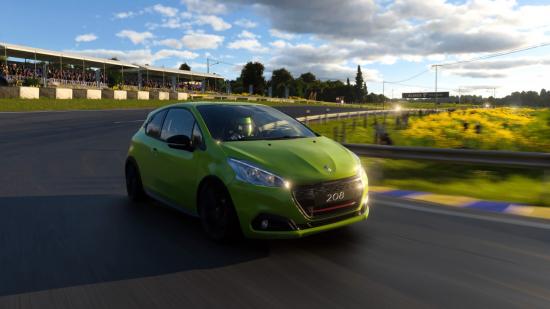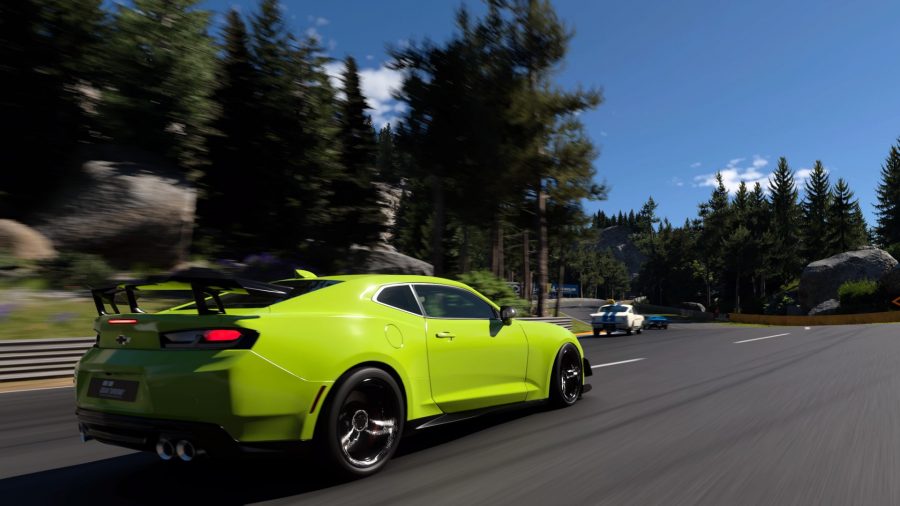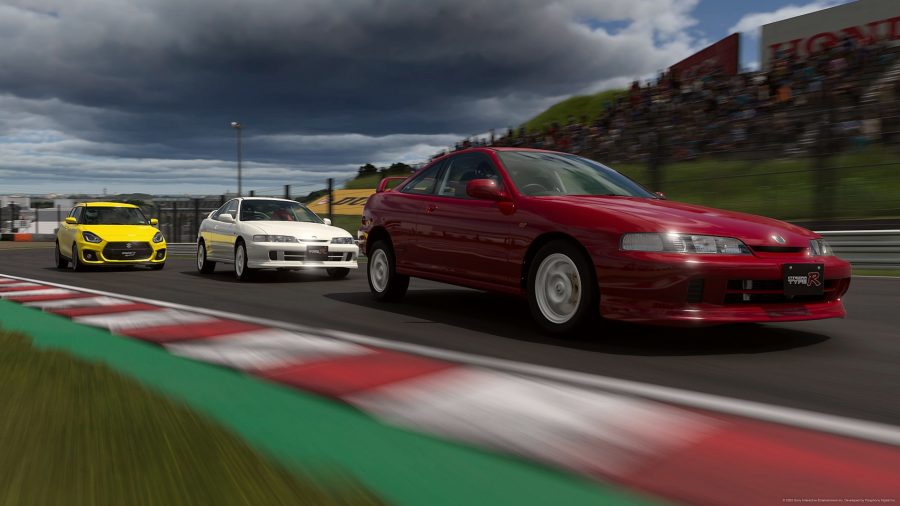Our Verdict
If we were scoring Gran Turismo 7 on its racing alone, we’d be looking at a five-star game that’s also packed with nostalgia and charm. However, the early hours will be sluggish for racing game fans, the car line-up could be more diverse, and the online experience currently tarnishes the amazing on-track gameplay.
If you’re looking for a quick, espresso-shot summary of Gran Turismo 7, it’s this: it has delivered on pretty much everything it promised it would do. And to be honest, did you expect anything else?
At no point in the build up to Gran Turismo 7 did I have any doubt the racing experience in this game would be nothing short of excellent, and I’m happy to report that optimism wasn’t misplaced. Pick any aspect or feature of GT7 that was advertised before its release, and ask the question: ‘Is it good?’ The answer, in probably 90% of cases, is ‘yes’.
While Gran Turismo 7’s main story – centred around completing races and collecting cars to fill out your menu book in the slightly odd yet charming Gran Turismo Café – is a bit basic and repetitive, it’s largely forgiven for the fun you’ll have out on track. The gradual increase in difficulty and risk of the events – taking you from compact Japanese superminis through to European hot hatches, iconic muscle cars, and beyond – combined with the returning License Centre which was absent from GT Sport will certainly ease new players in. It does however come across as a bit sluggish and unnecessary to anyone with more than a moderate amount of racing game experience.
Although the first dozen or so races are all stunning, they are all rather short and underwhelming. It’s only when you get to your first event on the streets of Tokyo do you get your first real thrill.
While it isn’t the cleanest of getaways, Gran Turismo 7 gains real momentum once the rest of the game is opened up to players. The story races become far more challenging and engaging as you unlock some of the more exciting tracks GT7 has to offer, and there’s plenty more to get lost in too, such as the photo mode that makes you really appreciate the graphical prowess of GT7, or the livery editor and library of community-made content to deck out your cars.
While the on-track action is sublime, it is rather tarnished as soon as you hop into Gran Turismo 7’s online multiplayer. The lobby system Polyphony has chosen for online races looks clean enough, with plenty of filters to find just the race you want.
However, in practice, the online experience is poor. Players fill up lobbies, only to be left in practice mode limbo for what feels like eternity as hosts fail to start the race. Then, if you do find yourself in an actual race, inexperienced (or malicious) players simply hurtle their vehicles into the first braking zone to play some car skittles, seeing you wiped off the track before you can even get around the first major obstacle.
In an almost three-hour stint on a weekend evening, I only managed to complete four full races – and in three of those I was rammed off the road almost instantly. If you haven’t got a big group of pals willing to race with you in a lobby that you can control, it’s a disappointing experience.
While these negative behaviours are technically the fault of the players, Polyphony has next to no measures in place to prevent or punish them. While there are time penalties for corner cutting and ghosting for when you’re clearly obstructing the race, there are no repercussions for maliciously wiping out other players. Polyphony could also avoid the stale lobby situation by implementing timers, closing lobbies that have been inactive for a long time, or by hosting its own recurring events that are always guaranteed to start.
The online experience right now is an injustice to the sublime gameplay, but while the racing is mostly exquisite, there are a few things that let it down. Firstly, some of the driver assists which aim to give less experienced racers a bit of a boost, are a little clunky at times. The indicators for the braking zones occasionally appear too early or too late, and one driver assist option actually prevented me from getting Gold in a License test. After 20 minutes of struggling to take the same line as the ghost car in said License test, I turned Countersteering off – a setting that I believe is on by default – and managed to get gold on the first try afterwards.
The AI is also a bit tame and predictable, even on the hardest setting. While I know Gran Turismo loves to immerse you in the therapeutic, well-mannered world of track day racing, I do wish the AI would spice things up a bit and make it feel less like I was racing, well, the AI. You see the occasional AI car lose the back end or drift a little wide, but overall they don’t offer up much of a fight to experienced racing game fans. While on the whole it’s the inferior racer to GT7, I look to GRID Legends’ AI as proof this can be done in a way that doesn’t bring about total carnage.
I also felt a bit underwhelmed at the use of haptic feedback for the DualSense. It offers a bit of trigger resistance when braking and accelerating, it clunks when you change gear in certain cars, and it rumbles when you take a curb or go over a bump, but beyond that, it’s not as immersive or impressive as I thought it might be. This is a shame for a game that pushes every other current-gen feature to the max.
On said features, the audio in GT7 is brilliant – especially when using the drivers’ POV camera and wearing headphones. The 3D audio works excellently, and you can instantly paint a picture, just with engine sounds, about where other cars are around you.
With the PS5’s power under the hood, we are treated to immense graphics, and the weather and day and night cycles in the game are almost enchanting to witness. I’m looking forward to getting stuck into longer distance races to see this in action a bit more, but even in the short story races, you’re treated to night races turning into dawn, sunbeams breaking through thick clouds, dramatic overcast skies, and much more.
What might be my biggest concern with Gran Turismo 7, though, is its line-up of cars and the game’s economy. While the cars you frequently earn throughout the Café menu book process are plentiful and diverse, I worry that players might feel underwhelmed post-story. It’s not a small line-up by any means – GT7 has over 400 vehicles at launch – but a lot of them are track-ready, end-game vehicles which cost a lot of credits.
There also seems to be a lack of current, exciting road cars for players to look forward to – GT7 instead leans on either the dependable road cars we’ve seen in Gran Turismo titles of the past.
While there are roulette tickets on offer, which like Forza Horizon 5’s Wheelspins give you a chance to win credits, a tuning part, or a car, these appear to be sparse and only give you a one-in-five chance of scooping a new vehicle. With new showroom cars and desirable classics in the Used Car Dealership costing a pretty penny, car collectors and completionists will likely face a serious grind.
Gran Turismo 7 does have plans for post-launch content, which may mitigate concerns around the line-up of cars, but it is something to be wary of.
Although I do have some some concerns, it’s clear that Gran Turismo 7 appeals to those already obsessed with the series, providing them with suitable measures of nostalgia and new features, as well as some gorgeous, expertly-crafted racing.
Despite crawling along at times, GT7 can still be enjoyed for its finish and gameplay. It sets the benchmark for on-track action, but it needs to improve when it comes to content and its online experience if it wants to retain more than just the GT die-hards.



